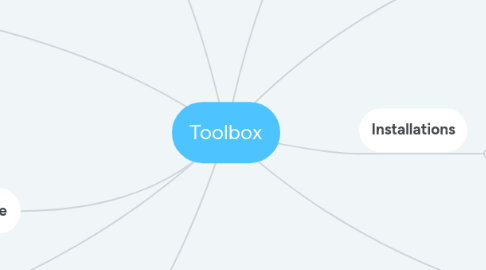
1. Materials
1.1. Plastics
1.2. Wood
1.3. Metal
1.4. Fabrics
1.5. Composites
1.6. Cost
1.6.1. Affordability
1.6.2. Customer requirments
2. Finishing
2.1. Colours
2.1.1. Knowing what colour to use
2.2. Surface finish
2.2.1. Cleaning difficulty
2.2.2. dripping
2.2.3. Robustness
2.3. Customer preferences
3. Safety
3.1. company rules
3.2. goggles
3.3. regulations
3.4. standards
3.5. hard hat
4. DIY use
4.1. small jobs in garden
4.2. working on a project
4.3. work around the house
4.4. safety
4.5. addaptability
4.5.1. to be used for different jobs
5. Size/Price
5.1. cost of materials
5.1.1. toolbox specifications
5.1.2. material type
5.2. toolbox size
5.2.1. customer requirments
5.2.2. job requirments
5.2.3. practicality
5.3. market competition
6. Cleanliness
6.1. Dirt
6.2. Dust
6.3. Accessability
6.3.1. Removal of component
7. Tools
7.1. Small tools
7.1.1. screw driver
7.1.2. pliers
7.1.3. Etc.
7.2. Tool organisation
7.2.1. system
7.2.2. shelves
7.2.3. saving space
7.2.4. accessability
7.3. Large Tools
7.3.1. drills
7.4. Size of toolbox required
7.5. Size and shape of compartments
8. Installations
8.1. draws
8.1.1. Removable/Fixed
8.1.2. Number of compartments
8.1.3. size of compartments
8.1.4. practicality
8.2. components
8.2.1. size
8.2.2. space saving
8.2.3. toughness
8.3. lighting fixtures
8.3.1. tool requirement at high level
9. Contractor Use
9.1. Building Site
9.1.1. Safety
9.1.2. Hazards
9.2. Electrition
9.2.1. Height adjustment for different jobs
9.2.2. Tool requirments
9.2.3. weight of box
9.3. Plumbing
9.3.1. size of tools
9.3.2. accessibility to tight spaces
9.3.3. handling of toolbox
9.4. Carpentary
9.4.1. size of tools
9.5. Sole trader
9.5.1. Addaptability
9.5.2. Practicality

